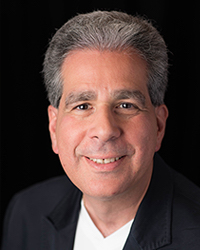
The news has been grim for full-time MBA programs this fall. Just two programs – the University of Chicago and Rice University – experienced an increase in applications during the 2018-2019 cycle. These declines were hardly a blip. Over the past three years, no Top 25 program posted gains in applications, with drops ranging from -2.2% (Columbia Business School) to -40.6% (Indiana University).
The full-time sector may be floundering, but applications to executive MBA programs are booming. That is one of the findings from the Executive MBA Council’s annual member survey (released October 7th). According to EMBAC members, which boasts 200 colleges and universities in 30 countries, EMBA programs have enjoyed a 31.6% increase in applications since 2015.

Michael Desiderio
“The growth of EMBA programs throughout several decades serves as a testament to their value in meeting the organizational thirst for leadership development,” writes Michael Desiderio, executive director of EMBAC, in a press release. “Executive MBA programs give students the tools they need to position themselves as invaluable leaders in the market. In fact, the amount of inquiries, completed applications received, and applications accepted have trended upward since 2015, and risen year-over-year for the past three years, which shows greater demand for such programs.”
EMBA APPLICATIONS UP AND SO ARE WOMEN IN EMBA PROGRAMS
The surge has also touched another key demographic. The percentage of female EMBA students has also climbed from 27.6% to 31.2% since 2015, the highest percentage in the survey’s history. That 3.6% increase compares favorably to the Top 25 full-time MBA programs, where 15 programs fell short of this percentage. Still, this 31.2% mark ranks below 20 of these full-time programs in 2018.
Overall, EMBA students were 38 years old, on average, in 2019 according to EMBAC data. They possessed 14 years of work experience – more than double their full-time counterparts – which also includes nine years of management experience. In terms of industry backgrounds, the largest bloc of 2019 EMBA entries hailed from the healthcare, pharmaceutical and biotech sector at 13.3%. At 9.5%, technology accounted for the second-largest portion of EMBA students.
LESS EMPLOYER SUPPORT
These weren’t the only intriguing numbers from the EMBAC member survey. For one, companies are sponsoring fewer EMBA students. According to survey data, 53% of students were funded their own education, compared to 41% in 2015. In fact, just 15% of students enjoyed full-sponsorship, down 8.2% over the past four years.
While employers are conserving, EMBA programs are splurging. For example, 93.2% of school respondents provided mandatory or optional global trips to students. In addition, EMBA programs have grown more flexible. 55% of programs now include distance learning options, up 13 points from 2015. What’s more, 90% use technology to deliver course programming, with popular means including business simulations, classroom video recording, social media, teleconferencing, virtual learning, and webinars.
While EMBAs generally hold jobs during school, 91.5% of students come to career services for guidance.
The EMBAC member survey was conducted from April to July in 2019, with 85% of members – which includes heavyweights like Wharton, Columbia, Northwestern, Oxford, IESE, and IMD – completing the survey.
DON’T MISS: MBA ADMISSIONS: HOW STATS DIFFER BETWEEN FULL-TIME & EXECUTIVE MBA PROGRAMSor 100 BEST & BRIGHTEST EXECUTIVE MBAS: CLASS OF 2019





Questions about this article? Email us or leave a comment below.